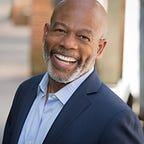You are NOT Coachable
In my 25+ years as a Leadership Coach, time and time again, being coachable proves to be a reliable access to high performance. For me, being coachable is the foundational practice for Being the Leader You Most Respect. Now, let us explore how to get the most out of any coaching relationship.
How do you know when you are NOT being coachable?
In the areas of your life that are most important to you, you know you are NOT being coachable when:
- You have a position (i.e., an opinion, a point of view, etc.), and you are attached to it as the truth.
- You use your position as a singular point of reference to identify and relate to yourself and your accountabilities, and others and their accountabilities.
- Your position is right, nothing and no one else can inform you about what to think, say, plan, and do.
- In relationships, you are often defending your position, or seeking agreement for it.
Your position is an agglomeration of your points of view, states of mind, thoughts, emotions, feelings. It triggers memories, recollections, and images from your past. It shapes your body postures, muscle patterns and even your physical sensations. Its sole purpose is to perpetuate its own existence and to convince you that it is you.
Said another way, by default, you are your position. As your position, you are not interested in any other point of view, and you are NOT coachable.
Making the transition from being your position to being coachable
To be a human being is to have positions. In my personal and business life, I have positions about me, about others and about life itself. Take my relationship with my mom for instance. When “she IS stubborn” is the truth, my relationship with her is limited to what I think, say, and do to deal with her stubbornness. By the same token, her relationship with me is limited to what she MUST think, say, and do to deal with me being my position. It is always confrontational. As much as I love my mom, she does not get to experience my love. There must be another way, right?
You can make an effective and sustainable transition from being your position to being coachable using the 7 steps that follow.
7 Steps for Making the Transition
- Step 1: Pick an area of your business or your life that’s not working as well as you’d like it to.
- Step 2: Write down your points of view, states of mind, thoughts, emotions, feelings, memories, recollections, and images from your past. While completing this step, observe and note your posture, muscle patterns, and your physical sensations.
- Step 3: Look over what you have written and answer the question: what is my position in this situation? Your natural tendency here will be to sugar-coat your answer and write down something nice. This is the opportunity to tell yourself the truth and discover the position that is running your business and your life. Do not hold any punches. Keep it short and raw. I am ashamed to say this, and I see that I have been more interested in validating my position and invalidating my mother as a stubborn woman.
- Step 4: Take a moment to let what you have written sink in. Then say out loud: “This is my position, and it’s not the truth”. Reasons to the contrary will flood your consciousness immediately. Observe them and look for connections to what you wrote in Step 2. Repeat this step until you have exhausted all the reasons you use to validate your position. Even if it is just for a moment, this step is designed to loosen the grip of your position and open a window onto a life shaped by your commitments, NOT your position.
- Step 5: Assess and account for the impact of having lived as your position. Assessing the impact is both quantitative (i.e., time and dollars wasted, opportunities missed, etc.), and qualitative (i.e., relationships damaged, emotional toll, etc.). Do this for you, then schedule conversations to assess and account for the impact on key stakeholders.
- Step 6: Write down what you are really committed to and say the following out loud: I am my commitment in this matter and going forward I promise to let my commitment drive my thoughts, plans and actions. This declaration is an act of creation — the creation of what it is to be coachable.
- Step 7: Commit to practicing and start practicing now by repeating steps 1 through 7. You may choose to engage a Practice Partner or Coach. It is up to you.
I will never claim that you need a coach. What we know is that the most intentional, the most effective and the most successful leaders choose to have a coach because they want to meet milestones faster and develop to their potential — and they know that takes planning and practice.
So, what I will assert is that each of us would benefit from having a coach. My goal is to motivate you to practice being coachable and to find a coach.
Stay Connected
To follow me, and share your discoveries as you practice, go to:
- Facebook: https://www.facebook.com/saurelquettan
- LinkedIn: https://www.linkedin.com/in/saurelquettan/
- Twitter: https://twitter.com/saurelquettan
- Schedule a 15-minute Introductory Call: https://ScheduleMyAppointmentWithSaurelQuettan.as.me/15-MinuteMeeting
Saurel Quettan, CEO & Founder of exeQfit, Inc. | squettan@exeqfit.com
